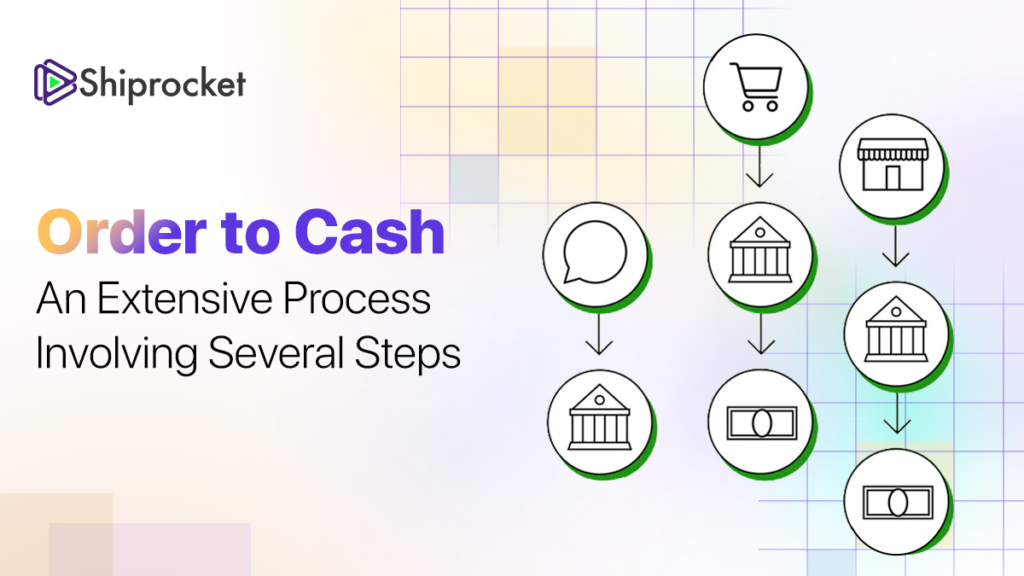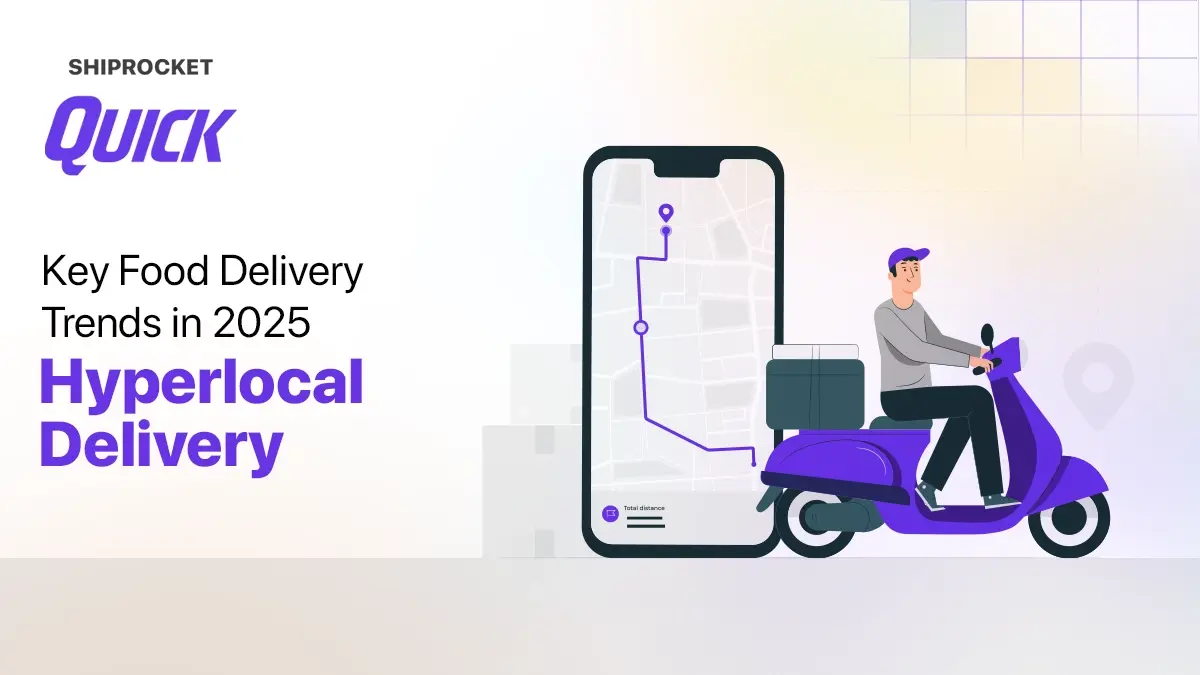Order to Cash Process: Your Quick Guide!
The order to cash (OTC) process forms a part of every business. It involves all the steps, starting from order placement to receiving the payment and registering it. Also known as OTC, the process must be carried out efficiently to maintain accurate records. While earlier businesses managed the process manually, most of them, these days, employ automation to complete different OTC steps. The entire order-to-cash process can be streamlined by using automation to enhance overall revenues by 10% to 15%. In this article, you will learn all about the different steps involved in the order-to-cash business process, its advantages and more.

Order-to-Cash Process in a Business: Meaning and Its Essentiality
Businesses create their order-to-cash processes specific to their needs so as to streamline their order placement and payment process and keep an eye on their cash flow. This information is necessary to make key business decisions.
Handling the OTC process efficiently is crucial and requires different departments to carry out their duties as defined in the process. Tasks such as order management, credit management and payment collection can be managed better when an effective order-to-cash business process is in place.
Businesses can leverage OTC to implement effective order-fulfillment and increase sales by enhancing customer experience. To achieve this, it is important to optimise the process through automation.
How Do the Steps From Order to Cash Advance?
There are a total of 8 steps if we consider the order to cash process flow chart. Here is a look at these steps:
- Order Placement – The first step in the process is customer order placement. This can be an individual placing an order to purchase a product online or a business sending a request for bulk orders through email.
- Order Management – The next step in the process is order management. This ensures that the order placed by the customers is directed to the relevant department for smooth order fulfillment. During this step, inventory is checked to see whether the goods ordered are available for dispatch or not.
- Credit Management – Both individuals and businesses may purchase products on credit. It is essential for businesses to manage a customer’s credit payment carefully. This involves running the payments done in credit through software for their approval.
- Order Fulfillment and Shipping – Once the payment is received, the next step is to ship the product. A number of things must be managed accurately to ensure safe shipment and timely delivery. This includes computing a delivery timeframe. By implementing automation, this step in the order to cash process flow chart can be managed smoothly.
- Invoicing and Billing – Businesses have to issue the invoice with accurate information for the customers to make the payment. This is an essential step in the OTC process. Employing a reliable customer invoicing system can help in generating invoices automatically. This is a quick way of accomplishing this task without the scope of human error.
- Accounts Receivable – Accounting software can help in carrying out this step efficiently. Such software systems are equipped with features that track overdue invoices as well as those that are near overdue. They also highlight repeat offenders so that your team can take necessary action against them and stop the pattern.
- Payment Collection – Customers make payments using different modes including net banking, debit/credit cards and wallets. Most businesses employ payment software to sail through the payment collection process swiftly. These software systems enable businesses to see when a payment is done and keep track of the pending payments.
- Data Management – This is the last step in the order to cash business process. Data management is important as it is by analysing the collated data that the businesses can view the scope of improvement.
Factors to Consider when Optimising Order-to-Cash Process
Here are some factors that can help optimise the order-to-cash process:
- Establishing a Performance Standard
In order to optimise the process, you must have a proper performance standard in place. All your employees involved in carrying out the process at different stages must be made aware of this process.
- Use of Advanced Systems
The use of advanced systems for order placement, payment collection, accounting and other procedures is crucial for optimising the process. The scope of errors is reduced by employing these software. Moreover, the process is carried out more quickly and systematically with their use. Businesses must switch to the latest software systems and get rid of outdated technology to speed up their tasks and ensure efficiency.
- Data Analysis
It is important to collate customer data from various software systems employed by you to check the order and payment patterns of the customers. This offers insightful information related to the customers’ buying behaviour and can be used to optimise your order-to-cash process. Regular monitoring also helps assess the company’s performance at various levels. This can help in understanding the scope of improvement.
Advantages of Order-to-Cash Automation
Here is a look at the various benefits of order-to-cash automation:
- Customer Satisfaction
A streamlined order-to-cash process forms the basis of customer satisfaction. It can be achieved only with the use of advanced automation tools. By employing automation at various steps of the OTC process including order placement, order management, payment collection, order fulfillment and data management, businesses can ensure efficiency and enhance customer experience. It adds to the credibility of the company.
- Cost Reduction
Automation helps in reducing the possibility of human errors and the price a business has to pay because of the same. Improvement in the process also helps in bringing down the operational expenses and overhead costs of the company.
- Boosts Revenue
Automation paves the way for satisfied customers. Customers who are satisfied with your products and services are likely to make repeat orders thereby increasing revenue. They also provide word-of-mouth publicity which generates public interest in your brand and attracts more customers. This helps in revenue generation. As your sales go up, you can plan for business expansion.
Conclusion
It is important to manage the order-to-cash process efficiently to ensure that the customer is able to place the order with ease and that the steps that follow are completed smoothly. Businesses that manage this process efficiently are able to boost customer satisfaction and enhance revenue generation. Automation is also instrumental in bringing down the cost to the company.
An order-to-cash process involves many moving components and dependencies, particularly for companies with significant sales volumes. Companies rely on their clients to pay their bills on schedule. Late payments reduce a company’s working capital, which in turn affects payroll, vendor payments on time, and employee morale. These factors can exacerbate the issue and have a detrimental effect on the order-to-cash process.
Order management is an extensive process in itself. It involves various steps that ensure seamless order fulfillment leading to customer satisfaction. As the customer places the order, the whole process of order management begins. This includes sending the order details to the warehouse, checking whether the products are available in stock, packing the ordered items with appropriate packaging material and labelling them correctly.
The order-to-cash process begins with a customer placing an order and ends with the delivery of that order. Several steps are involved in the process and are handled by specialised teams belonging to different departments. Order fulfillment, shipment, invoicing, payment collection and many other steps form a part of this process. Pay to procure, on the other hand, includes companies purchasing and receiving goods for their business.







